
Alphabet- H
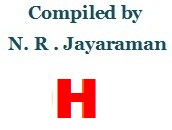
1. Halftone: Every photograph, whether black and white or in colour will virtually have unlimited range of shades of grays, or other colour hues starting from white to dark greys or very light colour hues to darkest hues (color) merging into the neighboring areas in a smooth flow. Since such photographs and illustrations having a range of shades from white to black and lightest hue to the darkest shade are not made up of dots the shades and hues will have to be broken into tiny dots or pixels of varying sizes in order to get printable form of plates without affecting the tonal values.
Splitting of such shades into tiny dots is achieved through a medium called dotted Screen i.e Halftone screen. The originals which have images made up of lines and dots and other such broken graphics will not be called halftone. Conversion of continuous tone images into printable halftone images by photographic technique or electromechanical engraving machines is called Halftone imaging process. In short a halftone means an image broken into several dots or pixels of various sizes. 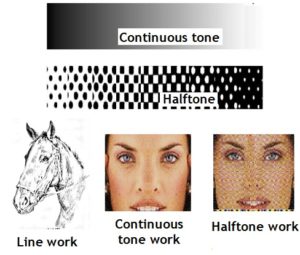 2. Halftone Screens : Two pieces of film or glass cemented together containing a grid of lines crossing each other showing a tiny gap. The said lines breaks the light passing through them into small dots depending on the amount of rays that is reflected back from the original. The halftone screen comes in glass as well as on film bases.
2. Halftone Screens : Two pieces of film or glass cemented together containing a grid of lines crossing each other showing a tiny gap. The said lines breaks the light passing through them into small dots depending on the amount of rays that is reflected back from the original. The halftone screen comes in glass as well as on film bases.
The film based screens are called Contact Screens. The screens which are available in Glass is called the glass screen. While the Glass screens are kept at some specified distance in front of the litho film in the camera screen holder through which the reproduction is made from a original, the contact screens are kept in contact with the film with vacuum switched on. The other way round to use the contact screen is to first make a continuous tone negative or positive and then take halftone contact negative or positive by keeping the continuous tone filmed image in contact with the contact screen.
In addition to the regular halftone screens, special screens with different patterns like square dots, round, elliptical etc are also available in the market. The halftone screens are made with different screen rulings. The resolution of a halftone screen is measured in lines per inch which is indicated by the term ‘lpi’. Therefore the resolution of the screen is written as “150 lpi” or “150#”. For finer work fine ruling screens such as 250 lpi and up to 400 lpi are used. The higher the number of lpi the finer the screen is, and the smaller the dot, the more detailed an image will appear. Read more under Fine Screen.

3. Handmade paper: Till the automatic paper making machines came into being, the paper was produced in earlier days by hand from a vat containing paper pulp. Such a process could not produce paper of uniform thickness . When making paper by hand, the a frame over which a sieve is stretched is immersed in the fiber suspension, and shaken slightly to allow the water drain out of the screen after the pulp gets into a sheet formation . The frames were allowed to remain for some time till the entire water gets drained out from the sieves and then dried. The paper made in such fashion is called Hand made paper . Depending on the structure of the sieve being used, the handmade paper will appear in terms of look-through. Colorful papers are made by Hand made paper process.
The handmade papers are always thick and used mostly for invitations, greeting cards, a cover for book material, and other fancy work. Handmade papers are also used for making carry bags. They can also be printed by Letterpress, Offset , Flexography and Screen Printing.
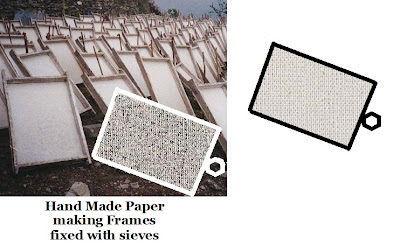
4. Hickeys: This is one of the defects arising out of paper dust and improperly ground Ink. This defect prominently appears in coated stocks. Lint or dust from paper, mainly dried ink particles, or dust or other contaminants in the press room causes this defect to appear. The dust and lint from the paper gets into the ink through the ink rollers and contaminate the ink in the ink duct and subsequently gets transferred to the plate as thick particle which in turn transfers them on to the paper. The result is the appearance of blots or thick ink particle on the printed image. If the hickie- dried ink- sticks to the plate, they continue to print broken image and therefore the machine will have to be stopped and cleaned. Some times the dried thick ink particle hickie gets instantly transferred to the paper from the plate and only that particular paper will be treated as spoiled printed sheet.

5. Humidity: Humidity means amount of water vapor contained in the room at a given temperature. There are various devices by which the humidity can be measured . A device used to measure humidity is called a Hygrometer. The humidity is affected by winds and by rainfall. The humidity is very important in the press rooms where paper will expand or shrink due to changes in the humidity.
The ideal press room relative humidity is 58 % +/- 2% in 25 degree C . The RH is the amount of moisture present in the air at a particular time as a percentage of the most moisture that could be in the air at a certain temperature.
For example if the air can hold 1000 droplets of water vapor at a particular temperature say 25 degree C, beyond which it can not accept the water vapor, it is called 100 % RH. Supposing the water vapor at the same temperature is 500 droplets, it is called 50 % Rh.
Therefore the paper is normally kept in the press room condition at least for three clear days before they are taken up for printing.
6. Halo Effect : A faint shadow or glow which is seen around the print especially when fine halftone image is printed may be called halo which in technical term is called halation. This is process reproduction defect arising from badly reproduced halftone negative whose exposures may not have been proper. This effect also occurs when the ink is too thin and penetrate into the paper and faintly spread the base varnish or solvent in the areas around the dots.
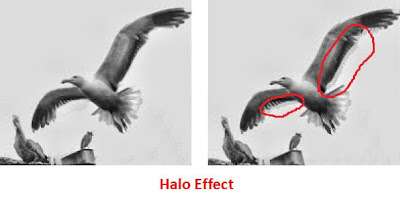
7. High-fidelity Color : Color reproduction using six, eight or twelve color separated negatives/positives as compared to three or four-color process of printing. The extra sets of colors are printed to enhance the quality of the images in the printed material.
8. Highlights : As pointed out under Halftone, every photograph, whether in black and white or in colour will virtually have unlimited range of shades of grays, starting from white to dark greys and lastly black or very light colours to darkest hues (color) merging into the neighboring areas in a smooth flow. The lightest portions in the images are called highlights.
9. Holograms – A hologram is a two or three dimensional image developed photographically with the use of lasers as the light source and special optics to create the graphics or photo images. Holograms work by creating an image composed of two or three superimposed two to three dimensional pictures of the same object seen from different reference points. The image changes as the position and orientation of the viewing system changes in the directions. Holograms are used in many areas mainly for brand protection as security feature.
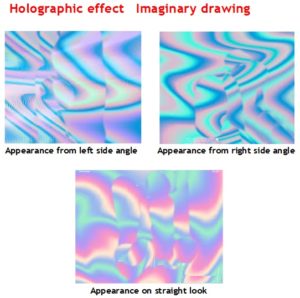
9. Hue: Hue refers to pure colors such as Red, Yellow or Cyan. All other colours are derived by mixing these three basic colours. Each colors have hues ranging from light to dark shades. For example Red may have 100 shades called Red hues, similarly blue, green etc. The twelve colours which are formed out of three Primary, three Secondary and six Tertiary colours are also called Hue.

10. Heat set inks: A quick-drying type of ink that dries by evaporation in high temperature. The printed sheets pass through a heat chamber to allow the solvent in the ink quickly evaporate thus facilitating quick drying. Heat set inks are used in both in Offset and in Letterpress and meant especially for web presses which needs to run fast . Heat set inks are used on very high speed web machines to print magazines, catalogs, newspaper etc.













Recent Comments